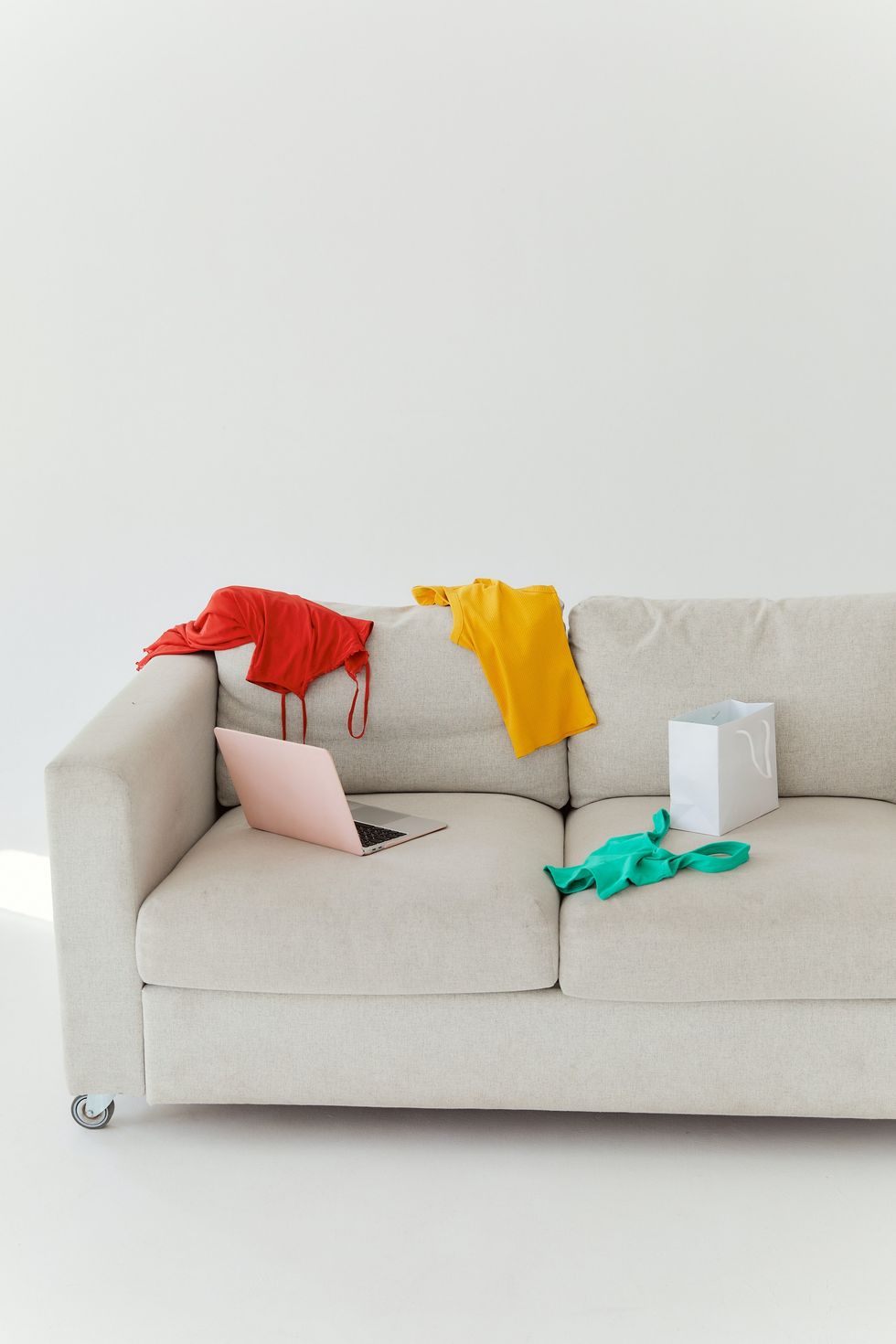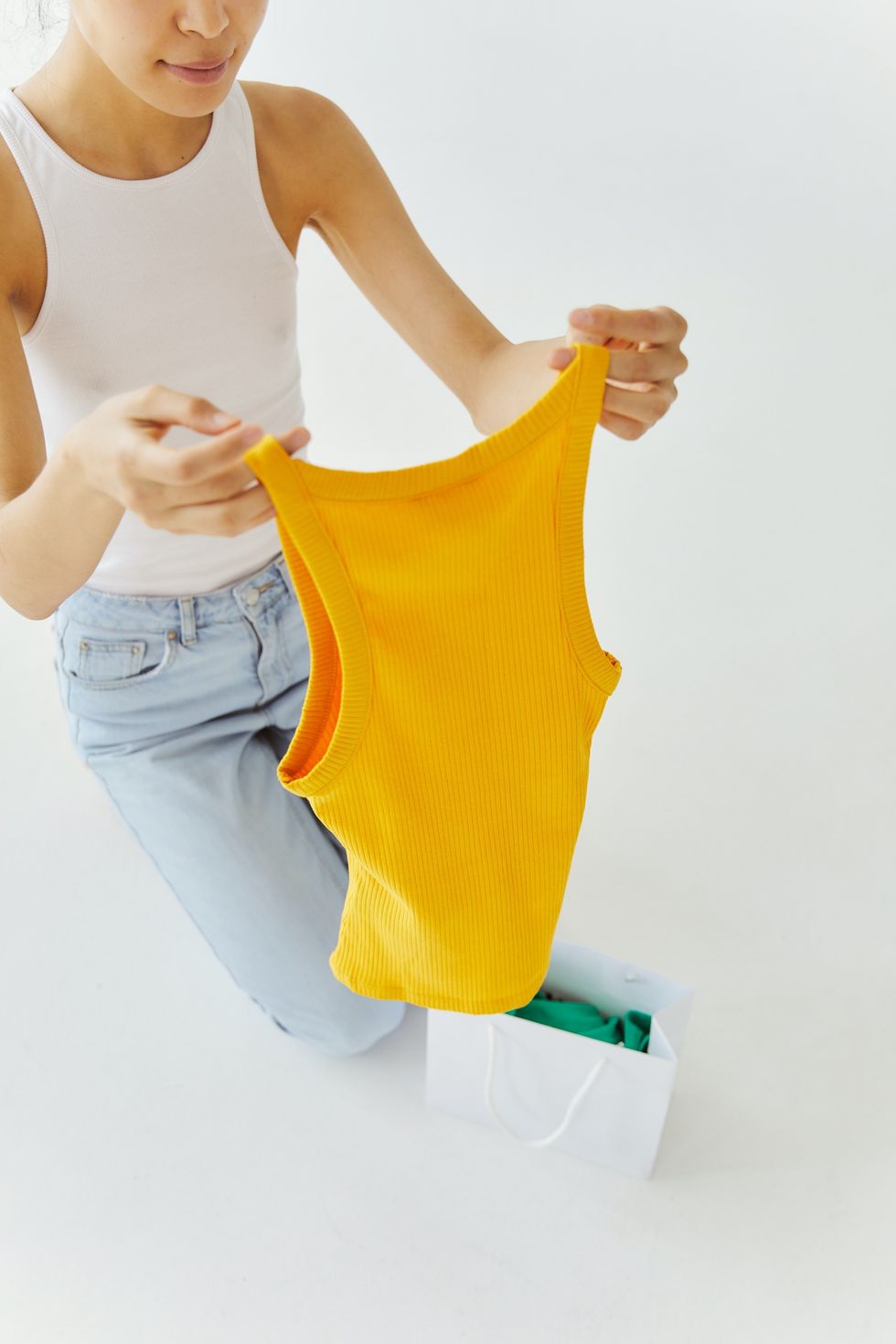
You know when you’re wriggling around in a dressing room, and the clothes just don’t feel right? You may account for the crappy lighting, or the stylist picking a size too small for you...but have you ever considered it might actually just be the color of the clothes you’re trying on? Some colors can seriously dull your shine, leaving you looking — and feeling — totally drab. Instead of tossing on something too bright just because it's there, you can get your glow back with a little practice called color analysis.
Color analysis isn't new to those in the know, but TikTok recently took the concept and ran with it in true internet fashion. You can find filters that flip through seasonal shades, how-to videos, and even real-time documentation of professional color analysis appointments. But how can you actually put color analysis into practice in your own life? Read on to learn more about this unique styling technique so you can dress your best every season.
What is color analysis?

Color analysis is the process of finding which colors work most harmoniously with your skin, eye, and hair colors. This includes the colors of your wardrobe, makeup shades, and even jewelry. Some palettes can oppose your natural complexion, drawing attention to dark spots, discoloration, and eye bags that steal your glow.
Seasonal color analysis steps up the basic color analysis, and associates one’s best colors with the colors found in nature in each season. The seasonal colors fall into winter, spring, summer, or autumn.
“The goal of color analysis is to create a visual connection between the qualities of color we see in one’s face and qualities of color worn in one’s clothing,” said Carol Davidson, a NYC-based color, style, and image expert. “It’s the difference between a person wearing their clothing, or the clothing wearing them.”
Color analysis is primarily based on your skin’s undertone, which can be warm, cool, or neutral. Determining your undertone on your own is fairly simple, according to Davidson. “Some people utilize the vein test to determine their skin’s undertone,” said Davidson. “In natural light, look at your wrists. If your veins appear blue or purple, there’s a good chance your skin skews cooler. If your veins look green, there’s a good chance your skin skews warmer.”
Another quick hack for doing color analysis yourself is assessing the level of contrast between your hair and skin, says Alison Bruhn, personal stylist and Co-Founder of The Style That Binds Us. “Those with softer coloring (AKA low contrast) should go for more muted colors. Strong colors can overwhelm and look too harsh. If you have high contrast between your hair and your skin, then clear, bold colors are a must!”
What are the wrong colors for me?

The wrong colors may cast shadows under your eyes or around your mouth, dull your skin tone, magnify imperfections on the skin, and simply overpower your natural look. You can keep an eye out for these effects when trying on different colors, but working with a professional can help gauge what works more specificity and ease.
“If you aren’t able to ask questions and watch someone performing color analysis on others a few times, so you can see it done in person, you will not be as successful in determining the correct color analysis,” said Bruhn. “My suggestion is either to take classes on color analysis, or find a professional to work with one-on-one.”
What are the right colors for me?

“The right colors can help a person look pulled together and connected to their clothing,” said Davidson. “They lessen the need for makeup by brightening the eyes and making skin glow, and boost confidence in how a person looks and feels.”
Having a color match can also help streamline your shopping trips. “When you know your colors, it helps you shop efficiently, saving time, energy, and money,” said Davidson. “This knowledge helps you repeat your clothing successes and minimize your clothing mistakes. You may buy an item thinking that it only works with one or two items, but when you bring it home, you realize that it goes with much more.”
Can I use color analysis at home?
You can definitely practice color analysis in your home. Jennifer Guerin, owner of JG Color Studios, says it's best to feel out different colors when matching your interiors: "Walk through your space and pay attention to what you see. What colors stand out to you that create joy? The most important rule is to understand the difference between cool, warm and neutral tones. If you can do that. you can create a home run on your own!"
A color analysis can save you tons of time, allowing you to create a color plan. This includes everything from wall paint, to accents and decor. The ultimate goal is to have your space reflect your personality and surroundings, just like wearing your color match would.
How can I practice color analysis?
@mikk022 I genuinely do not know which one suits me best #coloranalysis #personalcolor #personalcoloranalysis ♬ original sound - Mikayla
Professionals often have the optimal spaces and equipment to perform accurate color analysis, but if you want to do it on your own, here are a few helpful tips:
- Always begin your self-analysis in natural daylight. “Sometimes it’s hard to tell how colors look on ourselves,” said Bruhn. “You can’t get accurate views in a mirror or in a certain light. Closet and bathroom light is never the best option for judging if a color is right for you.”
- If you plan on utilizing color apps, templates, or quizzes to assess your color match, make sure you’re using more than one to see if your result is the same across the board.
- Look for dullness in your skin tone, as well as any noticeable imperfections that jump out against the colors you try on.
Sign up for our newsletter for all things style!
Header image by Darina Belonogova / PEXELS
0 Commentaires